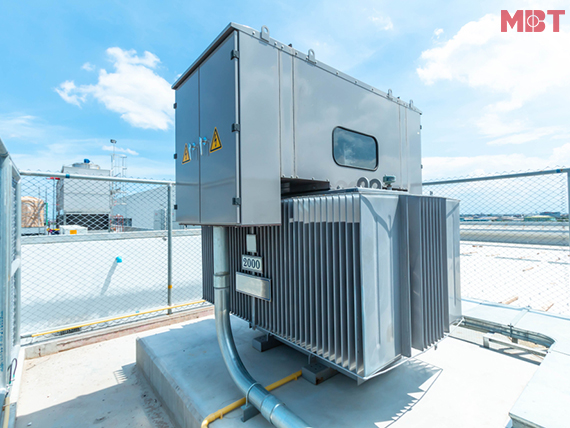What are the Advantages and Disadvantages of Oil-immersed transformer and Dry-type transformer?
What is the difference between dry type transformer and oil type transformer? In the field of construction engineering, a transformer is one of the indispensable pieces of equipment in the engineering of transmission and distribution of electrical systems. It is a crucial device to change voltage levels, reduce electrical energy loss during transmission and ensure safe power consumption. Pressure transformers are divided into oil-immersed transformers and dry-type transformers according to different cooling media.
1. Introduction of Oil-immersed transformers and Dry-type transformers
Oil transformers use mineral oil as the heat dissipation and insulation medium. This is a widely used electrical equipment in the world. Most of the transformers in today's power transmission systems are oil-cooled. There are two main types of oil transformers: Open-type transformers (Conservator type transformers) and Sealed-type transformers (Hermetically sealed type transformers).
Cooling oil according to the principle of heat generated by the coil and magnetic core during operation will transfer to the oil. The temperature of the oil will spread out to the outside through the transformer's metal shell.
Dry-type transformers are naturally cooled by air. The most recognizable feature for dry machines is that the core is wholly exposed instead of in a closed tank like an oil transformer. There are four types of dry transformers: Open wound transformer; Cast coil resin transformer - abbreviated as CRT; Vacuum pressure impregnation transformer - short for VPI; Vacuum Pressure Encapsulated - abbreviated as VPE. Of the four types of dry machines, CRT type is the most commonly used, followed by VPI, two kinds of VPE and dry open transformers are less widely used.
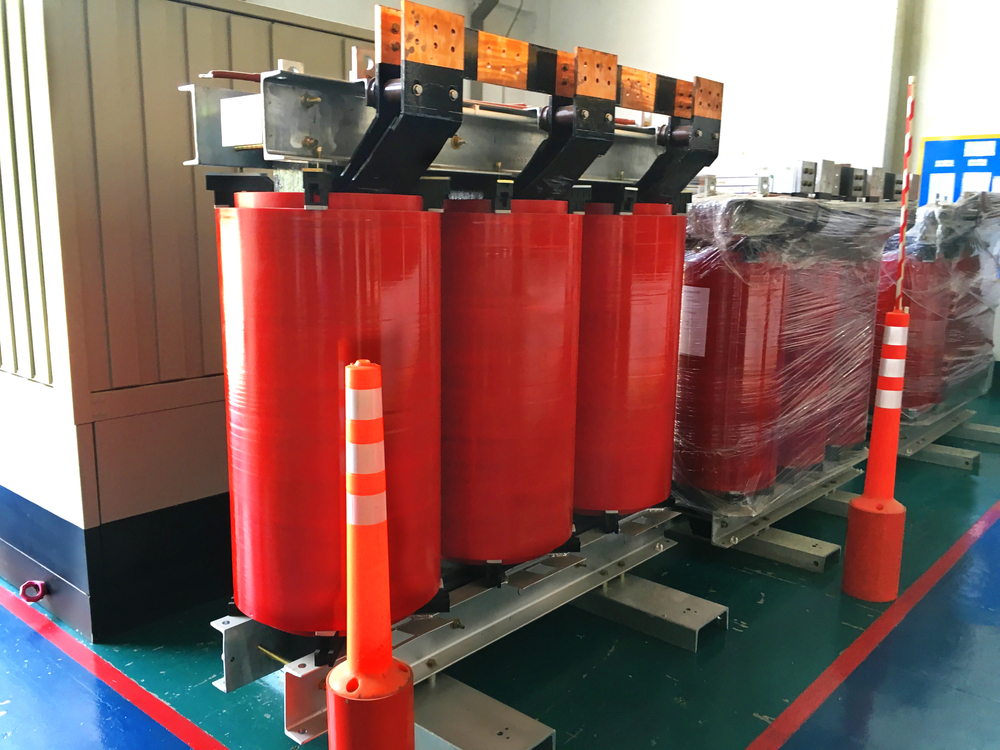
Cast coil resin transformer - CRT
Cast resin transformer is commonly used under high humidity environments thanks to the epoxy resin coated primary and secondary windings. The capacity of this transformer ranges from 25 kVA to 12,500 kVA.
Cast resin transformers have advantages: Good overload resistance, limited partial discharge, so the performance is better than other dry machines; minimize the risk of fire and explosion thanks to the insulation coating the coil. The CRT can be placed outdoors with resistance to solid objects larger than 1.0 mm in size and resist water from nozzles in all directions. This degree of protection corresponds to IP45 (protection level may vary by manufacturer).
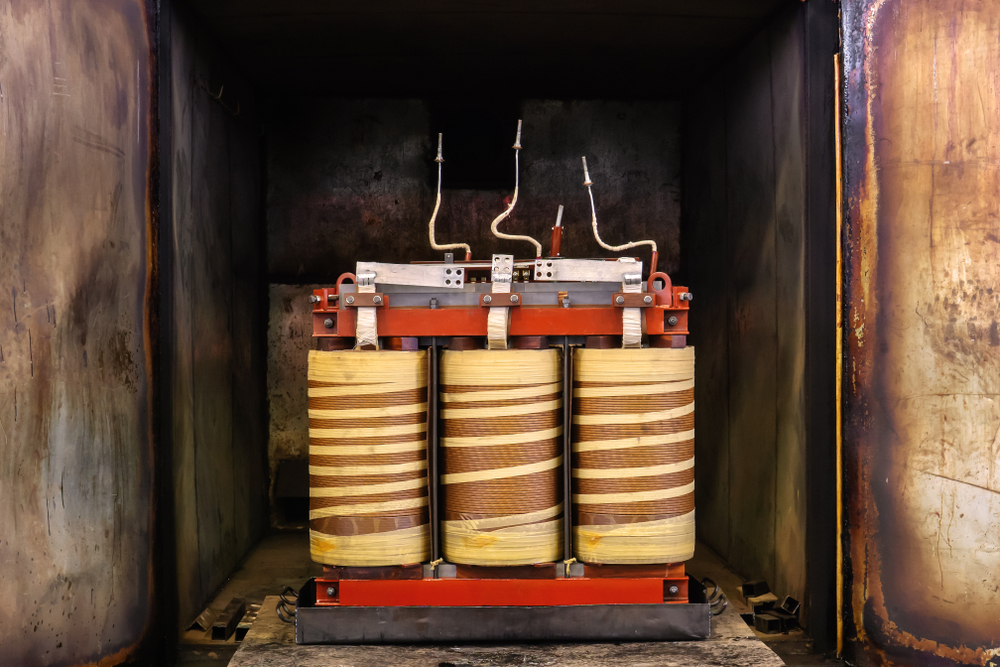
Vacuum pressure impregnation transformer - VPI transformer
Coils of VPI transformer are impregnated with polyester in a vacuum. Windings are designed in a disc, either in series or in parallel with a higher voltage, depending on the power level corresponding to the voltage level. The capacity of this type is only from 5 kVA to 30 kVA. The advantage of VPI over CRT is the level of protection. Instead of IP45 protection, vacuum transformers typically reach IP56 (the degree of protection may vary by manufacturer). At this level, the transformer is resistant to all types of dust ingress while also preventing the intrusion of large water currents (e.g., waves). VPI transformer is suitable for seagoing ships, etc.
The VPI transformer has advantages: High mechanical strength, no limitation in insulation, safety with the environment, low fire risk, convenient maintenance, and maintenance.
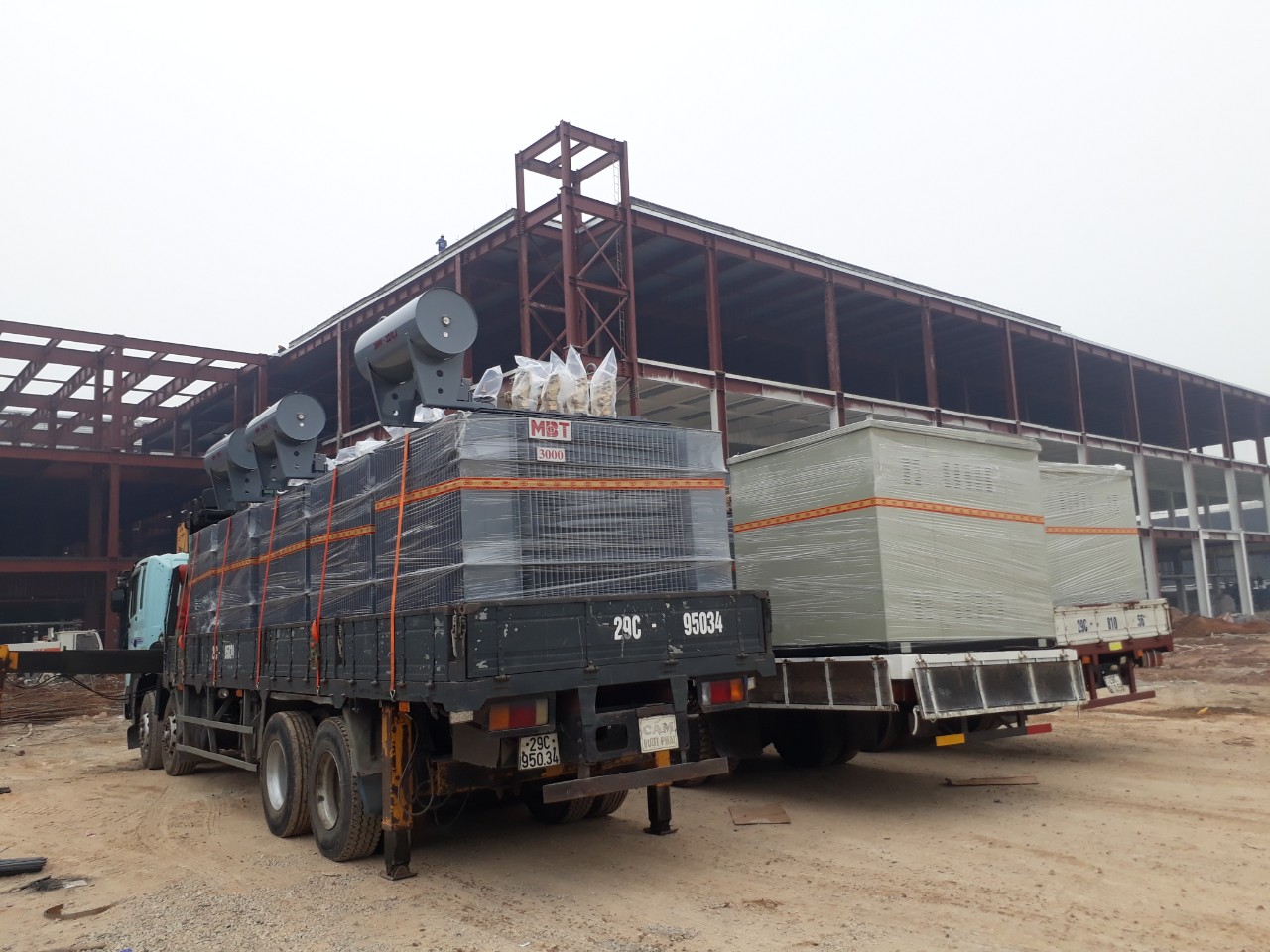
In the transmission system, the role of an oil transformer is irreplaceable.
2. Advantages of Oil-immersed transformers compared to Dry-type transformers
- The cost of procuring an oil transformer is usually 1.5 to 2 times lower than a dry transformer for the same capacity.
- Dry transformer' epoxy resin has poor heat dissipation performance than mineral oil.
- In general, the dry transformer's heat dissipation is inferior to that of the oil transformer, so the capacity of the dry transformer usually only meets the need for power distribution from the intermediate station to the end-consumption site. Also, on the grid system, oil transformers are more versatile (including transmission and distribution transformers).
- The dry-type transformer is usually suitable for voltages below 35 kV while oil-immersed are unlimited.
- The temperature monitoring of the dry transformer depends on the temperature sensor mounted inside the machine's body, so the obtained temperature is the temperature of a particular location, the temperature reflected by the screen is not the exact mean temperature. The transformer insulation oil conducts heat relatively evenly. The temperature reflected by the monitor can be considered the average temperature.
- Because of the monolithic casting structure of the dry transformer, compared with the ability to repair, recover, utilize, the oil transformer is more dominant. The insulating material of the machine dries out over time will age, and defects will accumulate. In the event of a failure, the dry transformer will be rejected entirely. The dry machine components, including copper (or aluminum) and the magnetic core, are nearly non-recyclable.
3. Disadvantages of Oil-immersed transformer compared to Dry-type transformer
- Despite the advantage of heat dissipation, the cooling oil is easy to catch fire and explosion. If an overpressure incident occurs, the engine oil spills create the risk of environmental pollution.
- When building a transformer station using oil transformers, it is required:
+ The spatial structure for oil-immersed transformer installation has stringent requirements. The distance from the wall/fence to the transformer must comply with technical standards. For indoor stations, the ceiling height for oil transformers is usually higher than for dry transformers due to many oil transformers with external oil tanks.
+ For the building, if the oil transformer is located in the building, the place where the transformer is situated must meet the fire resistance requirements according to the building's fire protection standards.
+ The building must have measures to prevent the fire from the spread.
+ The cost of building a transformer station used oil transformer is often higher than the price of using a dry transformer.
- Compared to oil transformers, dry transformers are more resistant to fire. In some special environments, such as hospitals, shopping malls, offices, underground structures, or high requirements for fire protection, dry transformers are preferred over oil transformers.
- According to the specification, in addition to the transformer, the transformer station also has intermediate equipment to regulate and control the power before supplying it to the consumer equipment. With dry transformers, these devices can be located in the same space; unlike oil transformers, they must be separated. The transformer station space using dry transformers is more optimized than using oil transformers. Also, combined with better fire resistance, more compact size than oil transformers (comparing the same capacity), using dry transformers for substations reduces investment costs to prevent fire, thereby saving the investment cost of building transformer space.
- Dry transformer maintenance costs are significantly reduced by no need to periodically check oil volume, oil aging, oil changes, and oil leaks.
Based on the advantages and disadvantages between oil-cooled transformers and dry transformers, choosing which types of transformer is suitable for the purpose and location of use entirely depends on the intentions investor's interest.
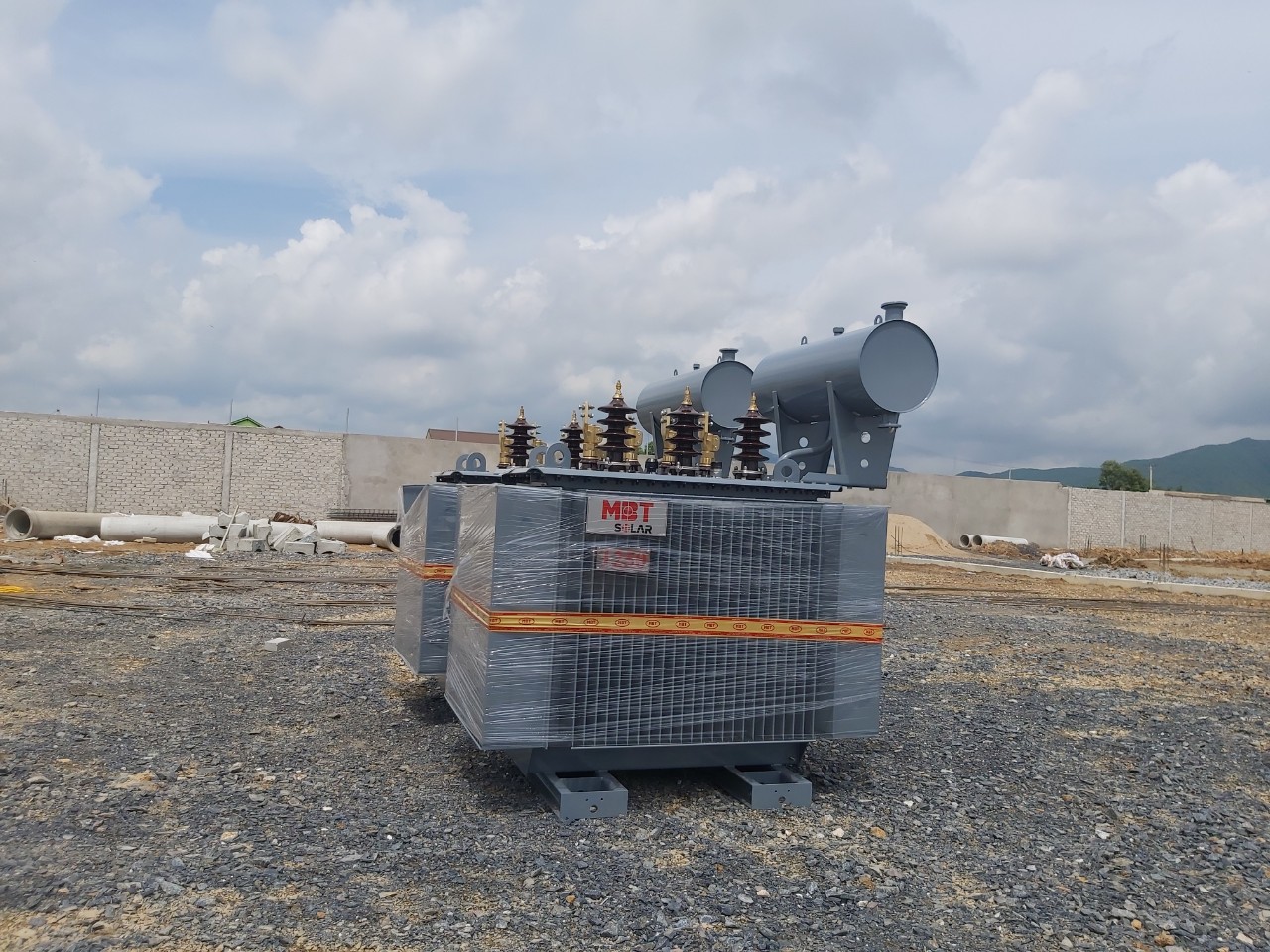
MBT Solar transformer in Solar Power Project
MBT is a brand of transformer products that have a high reputation in the market. With the strength of experience and technological lines in manufacturing, a good team of engineers, skilled technical workers, and abundant customer partners in many areas, so we are always leading about quality of service and price.
We design, manufacture, and supply all kinds of electrical transformers with a dedicated project manager and a 24-month guarantee from dispatch.
With the business motto: "A satisfied customer is the best business strategy of all," and over 11 years of experience in transformer design and manufacture. We, MBT, are confident of being the best transformer manufacturer in Vietnam.
Contact immediately +84913 006 538 or email: info@mbt.vn for a free consultation and support and receive the most preferential quotation.
